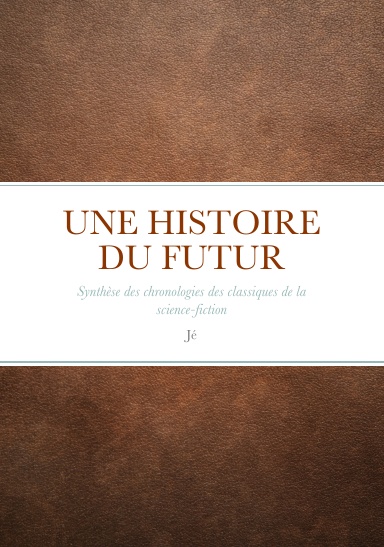Le terme tachyon a été pour la première fois utilisé en 1964 par le physicien Gerald Feinberg. Il vient du grec ancien tachus signifiant en français rapide.
Dans les œuvres de fiction
La nature hypothétique et spéculative du tachyon a naturellement nourri la création d'œuvres de fiction. De manière générale, le tachyon est en fiction un unobtainium, un moyen facile de justifier un élément généralement central de l’intrigue. D'autres œuvres font intervenir les tachyons sans employer leurs propriétés supraluminiques.
Les tachyons sont souvent utilisés pour justifier les voyages ou transmissions supraluminiques.
visualisation d'un Tachyon.
Comme cette particule se déplace à une vitesse supérieure à celle de la lumière, on ne pourrait pas le voir arriver. Après son passage, on pourrait voir deux images du tachyon, s'éloignant dans des directions opposées. La ligne noire est l'onde de choc de l'effet Tcherenkov, dont on a seulement représenté l'état à un moment donné.
Source : http://fr.wikipedia.org/wiki/Tachyon



















7 commentaires:
Le tachyon est probablement la particule sur laquelle s'appuie la communication par ansible.
Une ansible est un dispositif théorique permettant de réaliser des communications à une vitesse supraluminique, imaginé en 1966 par Ursula K. Le Guin dans Le Monde de Rocannon. Elle en détaillera plus tard le concept dans Les Dépossédés (1974).
L'idée est notamment reprise par Orson Scott Card dans son cycle La Stratégie Ender, par Vernor Vinge et par Dan Simmons dans Ilium et Hypérion mais aussi dans La Bohème et l'Ivraie d'Ayerdhal ainsi que dans la série de jeux vidéo Mass Effect, la communication étant basée sur l'état d'énergie réciproque de deux particules jumelles.
The word ansible was coined by Ursula K. Le Guin in her 1966 novel Rocannon's World. Le Guin states that she derived the name from "answerable," as the device would allow its users to receive answers to their messages in a reasonable amount of time, even over interstellar distances. Her award-winning 1974 novel The Dispossessed, a book in the Hainish Cycle, tells of the invention of the ansible.
Similar devices are present in the works of numerous others, such as Frank Herbert and Philip Pullman, who called his a lodestone resonator.
Anne McCaffrey's Crystal Singer series posited an instantaneous communication device powered by rare "Black Crystal" from the planet Ballybran. Black Crystals cut from the same mineral deposit could be "tuned" to sympathetically vibrate with each other instantly, even when separated by interstellar distances, allowing instantaneous telephone-like voice and data communication. Similarly, in Gregory Keyes' series The Age of Unreason, "aetherschreibers" use two halves of a single "chime" to communicate, aided by scientific alchemy. While the speed of communication is important, so is the fact that the messages cannot be overheard except by listeners with a piece of the same original crystal.
Stephen R. Donaldson, in his Gap cycle, proposed a similar system, Symbiotic Crystalline Resonance Transmission, clearly ansible-type technology but very difficult to produce and limited to text messages.
Some hard science fiction stories use small (possibly nano-sized) paired wormholes dedicated to communication by means of a laser which traverses the wormhole.[citation needed] In Robert L. Forward's novel Timemaster, the wormhole is a living organism resembling a fourth-dimensional sea anemone, "stretched" to cover the distance between a spaceship and a satellite on the home planet.
Charles Stross's books Singularity Sky and Iron Sunrise make use of "causal channels" which use entangled particles for instantaneous two-way communication. The technique has drawbacks in that the entangled particles are expendable and the use of faster-than-light travel destroys the entanglement, so that one end of the channel must be transported below light speed. This makes them expensive and limits their usefulness somewhat.
In Richard K. Morgan's Takeshi Kovacs novels human colonies on distant planets maintain contact with earth and each other via hyperspatial needlecast, a technology which moves information "...so close to instantaneously that scientists are still arguing about the terminology...".
One ansible-like device which predates Le Guin's is the Dirac communicator that features in several of the works of James Blish, notably his 1954 short story "Beep". As alluded to in the title, any active device received the sum of all transmitted messages in universal space-time, in a single pulse, so that demultiplexing yielded information about the past, present, and future.
In the story With Folded Hands (1947), by Jack Williamson, instant communication and power transfer through interstellar space is possible with something referred to as rhodomagnetic waves.
Isaac Asimov solved the same communication problem with the hyper-wave relay in the Foundation series. Larry Niven later used the same term for the plot device used within his Known Space series of novels and short stories, notably in the Ringworld and associated Fleet of Worlds series.
In Ivan Yefremov's 1957 novel Andromeda, a device for instant transfer of information and matter is made real by using "bipolar mathematics" to explore use of anti-gravitational shadow vectors through a zero field and the antispace, which enables them to make contact with the planet of Epsilon Tucanae.
Le Guin's ansible was said to communicate "instantaneously", but other authors have adopted the name for devices capable only of finite-speed communication, although still faster than light.
The subspace radio, best known today from Star Trek and named for the method used in the series for achieving faster-than-light travel, was the most commonly used name for such a faster-than-light communicator in the science fiction of the 1930s to the 1950s.
In all the Stargate television series, characters are able to communicate instantaneously over long distances by transferring their consciousness into another person or being anywhere in the universe using "Ancient communication stones". It is not known how these stones operate, but the technology explained in the show usually revolves around wormholes for instant teleportation, faster-than-light, space-warping travel, and sometimes around quantum multiverses.
Jonathan Rosenberg, author/artist of the humorous science fiction webcomic Scenes from a Multiverse, references an ansible powered by a quantum-entangled ferret in one of the comics.
In Avatar continuity, superluminal communication via a subtle control over the state of entangled particles is possible, but for practical purposes extremely slow and expensive: at a transmission rate of three bits of information per hour and a cost of $7,500 per bit, it is used for only the highest priority messages.
In the Doctor Who episode Nightmare in Silver a character references a broken ansible communicator.
In Le Guin's work
In The Word for World Is Forest, Le Guin explains that in order for communication to work with any pair of ansibles, at least one "must be on a large-mass body, the other can be anywhere in the cosmos."
In The Left Hand of Darkness, the ansible
doesn't involve radio waves, or any form of energy. The principle it works on, the constant of simultaneity, is analogous in some ways to gravity ... One point has to be fixed, on a planet of certain mass, but the other end is portable.
Unlike McCaffrey's black crystal transceivers, Le Guin's ansibles are not mated pairs: it is possible for an ansible's coordinates to be set to any known location of a receiving ansible. Moreover, the ansibles Le Guin uses in her stories apparently have a very limited bandwidth which only allows for at most a few hundred characters of text to be communicated in any transaction of a dialog session. Instead of a microphone and speaker, Le Guin's ansibles are attached to a keyboard and small display to perform text messaging.
Enregistrer un commentaire